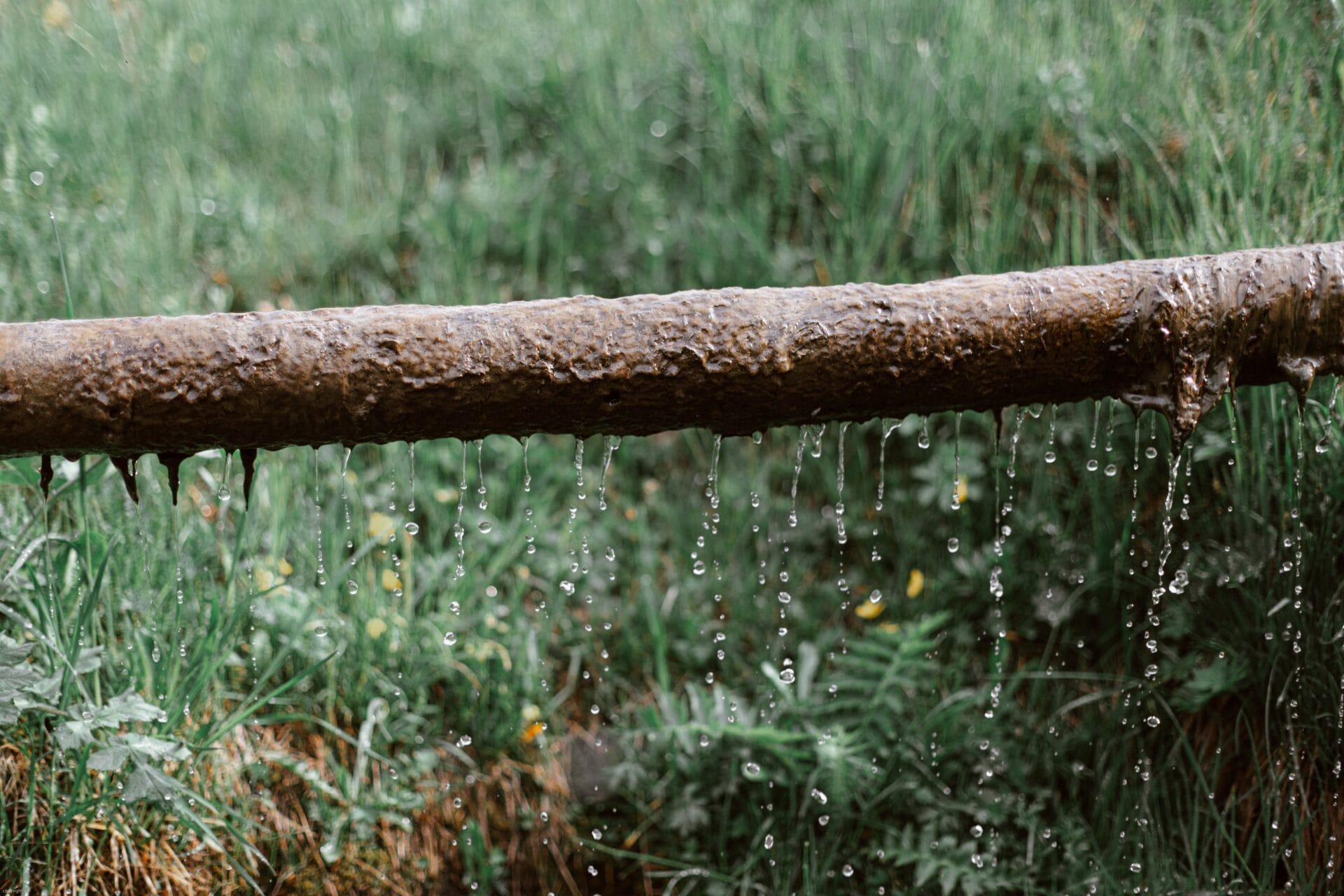Installing a new water line to provide water to your refrigerator can be a surprisingly simple process. However, it is important to understand the cost of running a water line to your fridge before you start the project. This article will discuss the various factors that can affect the cost of running a water line to your refrigerator, including materials, labor, and any potential additional costs.The cost of running a water line to a fridge will depend on the distance from the existing water line and any other necessary materials. The average cost for running a water line is around $300 to $500, but this could vary depending on the complexity of the installation.
Location of the Fridge
The location of the fridge is an important factor in determining the price of installing a water line to it. The distance from the main water line to the fridge needs to be taken into consideration, as well as any obstacles such as walls or other objects that may need to be worked around. The more complex the job is, the more expensive it will likely be.
Size and Type of Pipe
The size and type of pipe used for a water line installation also affects its cost. Copper pipes are typically more expensive than flexible plastic pipes, but may be necessary if longevity and durability are desired. Additionally, the size of pipe needed can depend on how much water pressure is needed for the fridge and any other appliances connected to it.
Labor Costs
Labor costs are another factor that can affect the price of installing a water line to a refrigerator. Professional plumbers usually charge by the hour or by the job, so if there is a lot of work involved in running new lines, this could add up quickly. It’s important to factor in these costs when budgeting for a water line installation project.
Permits and Inspections
In some cases, permits may be required before a new water line installation can begin. Also, depending on local regulations, inspections may need to occur periodically after installation is complete. These extra steps can increase costs significantly and should be factored into any budgeting decisions related to such projects.
Average Cost of Supplies Needed to Run Water Line To Fridge
Running a water line from your refrigerator to your plumbing is a great way to enjoy cold, filtered water and ice without having to manually fill up pitchers and glasses. However, this convenience comes at a cost. Knowing the average cost of the supplies necessary to run a water line is an important part of deciding whether this project is within your budget.
The average cost for supplies and materials necessary for running a water line from the fridge to the plumbing can range anywhere from $50 to $200. This includes the tubing, fasteners, connectors, as well as other necessary hardware that may be required for connecting and running the line. Of course, these costs will vary depending on how many materials you need and where you purchase them from.
In addition to supplies needed for running the water line, you may also need additional tools or equipment in order to complete this project. These may include pipe cutters or wrenches which can range anywhere from $10-$50 depending on what type you purchase. You may also need access panels or ceiling tiles which could add an additional cost of $20-$100 depending on how many are needed.
Finally, if you don’t have experience with home plumbing projects it’s best to hire a professional plumber who can make sure everything is installed correctly and safely. The cost for professional installation services will vary depending on where you live but typically range anywhere from $150-$500+.
Overall, when considering the cost of supplies and services needed for running a water line from your refrigerator to your plumbing it’s important to factor in all potential costs before starting this project. The average cost for supplies alone can range anywhere from $50-$200 while additional tools or equipment may add an extra $10-$100 onto that total depending on what is needed. If you don’t have experience with home plumbing projects it’s best to hire a professional plumber which can add an additional $150-$500+ onto these costs depending on where you live.
Preparing for the Installation
Installing a water line to a refrigerator is not a difficult job, but it is important to take the necessary precautions before beginning. It’s important to make sure that the water supply line is properly sized and installed so that it can handle the necessary pressure. Additionally, it’s important to make sure that the refrigerator has enough space for the installation of the water line. Before beginning, make sure you shut off the main water supply and turn off any electricity in the area where you will be working.
Installing the Water Line
The first step in installing a water line to a refrigerator is to locate an existing source of cold-water near the refrigerator. Once you have located this source, you will need to shut off any valves controlling its flow and then disconnect any existing lines from it. Next, connect a new copper or plastic cold-water supply line to your refrigerator with appropriate fittings. Then, turn on your main water supply and check for leaks at all connections. If there are no leaks, you can then turn on any valves controlling your cold-water supply and test your installation by running some water through it.
Cleaning Your Refrigerator
Once you have finished installing your water line, it’s important to clean out your refrigerator before using it with a new water connection. This will help ensure that there are no contaminants or debris present within your fridge that could contaminate your drinking water. To do this, first turn off both your main power switch and your cold-water valve and then unplug your refrigerator from its power outlet. Then remove any food items from within and wipe down all surfaces with soap and warm water.
Testing Your Refrigerator
After cleaning out your refrigerator, it’s time to test its performance with its new water connection. Start by turning on both power switches and then turning on any valves controlling your cold-water supply. Check for leaks once again at all connections before connecting an ice maker or other appliance connected to the new line if necessary. Once everything is connected up properly, run some cold-water through each appliance connected to make sure everything is working as expected.
Maintaining Your Refrigerator
Once everything is set up properly in terms of running a new water line to a fridge, there are some maintenance steps that should be taken periodically in order to keep everything running smoothly over time. These include checking for leaks at all connections regularly; replacing worn or damaged parts; cleaning out any sediment build up in pipes; flushing out filters; adjusting pressure regulators; and checking temperature settings as needed. With regular maintenance, you can ensure that your fridge’s new water connection continues running smoothly over time without interruption or damage.
The Benefits of Having a Water Line To Fridge
Having a water line to your refrigerator can be a great convenience for many households. It allows you to quickly and easily access cold, filtered water without having to lug around a large pitcher or jug. This can be especially useful for larger households or those who have multiple people in the home consuming large amounts of water. The convenience of having access to clean, filtered water on demand can make life much easier. Additionally, the installation of a water line to your refrigerator can save you time and money by eliminating the need for purchasing bottled water.
In addition to providing convenience and cost savings, having a water line connected to your refrigerator can also help improve the quality of your drinking water. Most refrigerators are equipped with an ice maker and/or filtered-water dispenser which use a sediment filter cartridge or reverse osmosis membrane to purify the drinking water before it is dispensed. This helps ensure that the drinking water is free from contaminants such as lead, chlorine, and other chemicals that may be found in tap water. Additionally, having a dedicated line for your refrigerator eliminates any potential contamination from other sources such as garden hoses used for landscaping or other outdoor activities.
Finally, having a dedicated line for your refrigerator can also help reduce energy costs associated with running an ice maker or filtered-water dispenser which are typically powered by electricity. This is because these units draw more power when they are turned on than when they are off, so having them connected directly to their own dedicated power source ensures that they are not drawing power unnecessarily when not in use. In addition, dedicating a line for your refrigerator also reduces wear and tear on other appliances such as dishwashers or washing machines since these units will no longer have to compete with the refrigerator’s power needs.
Overall, having a dedicated waterline connected to your refrigerator offers many benefits including convenience, cost savings, improved drinking-water quality, and reduced energy costs. Whether you’re looking for an easy way to access cold filtered-water on demand or simply looking for ways to save money on energy costs associated with running an ice maker or filtered-water dispenser, connecting your refrigerator directly to its own dedicated line is definitely worth considering.

Professional Installation vs. DIY for Running Water Lines To Fridge
When it comes to running a water line for a refrigerator, there is an ongoing debate between professional installation and doing it yourself (DIY). While DIY projects can save you money and be fun, professional installation of water lines may be the preferred option in some situations.
One of the biggest benefits of hiring a professional is that they will be able to get the job done quickly and correctly. Professional installers are knowledgeable and experienced in running water lines to refrigerators, so they can handle any potential issues that may arise with ease. Also, if the job is done incorrectly, you may end up with costly repairs or even damage to your home. Working with a professional can help ensure that the job is done right the first time.
DIY installation of water lines does have its advantages as well. For starters, it’s much more cost effective than hiring a professional installer. In addition, you’ll be able to learn how to do this kind of plumbing work yourself and have the satisfaction of completing a project on your own.
In the end, it really depends on your skills and comfort level when it comes to deciding between professional installation or DIY for running water lines to your fridge. If you’re comfortable doing it yourself and don’t mind taking on the risk that something could go wrong, then DIY might be the way to go. However, if you’re not confident in your abilities or want peace of mind that everything will be done correctly, then hiring a professional installer is probably the better option.
Safety Tips for Installing Water Lines To Fridge
Installing water lines to a fridge is an easy and simple task but safety measures should always be taken in order to avoid any accidents. Following are some safety tips that should be kept in mind while installing water lines:
Firstly, it is important to make sure that the water line used is compatible with the fridge model and meets the manufacturer’s specifications. Whenever possible, it is best to use the same type of material and size as those supplied by the manufacturer.
It is also essential to ensure that all the necessary tools are available before beginning with the installation process. This includes a wrench, adjustable pliers, pipe wrenches, hack saws, safety glasses and some plumbing tape.
Before connecting the water line to the fridge, it is important to turn off the main water supply valve. This will prevent any accidental flooding from occurring during the installation process. It should also be noted that all connections must be made securely so that there are no leaks or blockages in the line.
In addition, it is also important to test for leaks after connecting all components of the water line. This can be done by turning on the main valve and observing any leakage occurring in connections or other parts of the system. If any leaks are observed then they must be fixed immediately before proceeding with further installation steps.
Finally, when installing a new water line it is important to leave enough space between each component for maintenance purposes. This will make it easier for technicians or plumbers to access and check different parts of the system if needed in future.
Preparing for Installation of a Water Line To Fridge
Before you start installation of a water line to your fridge, it is important to ensure that you have all the necessary supplies. This includes the water line, a shut-off valve, drill bit, mounting bracket, and any other materials needed to complete the job. You should also make sure that the area surrounding the fridge is clear and free of any obstacles that could impede the installation process. Additionally, it is important to turn off the main water supply before beginning any installation work.
Once you have gathered all of the necessary supplies and have cleared an area for working, you can begin installation of your water line. The first step is to determine where you want to route your water line in order to reach your fridge. It is usually best to run it along an exterior wall or under a sink cabinet if possible. Once you have determined where you would like to route your water line, you can mark off where holes will need to be drilled in order to complete the job.
Once your holes are drilled, you can attach your shut-off valve and mount it securely in place. Next, feed your water line through the hole and attach it firmly onto the valve using appropriate fittings. Finally, secure your mounting bracket into place and attach it tightly onto the fridge using screws or bolts. After everything is secure and in place, turn on the main water supply and check for any leaks or other issues before use.
Following these steps will help ensure that installation of your water line runs smoothly and safely. With proper planning and preparation beforehand, installing a new water line should be relatively straightforward.

Conclusion
Running a water line to your fridge can be a great convenience for you and your family. It eliminates the need to keep large jugs of water in the fridge and allows for easy access to cold, filtered water. While it can be an expensive project, it is worth the cost in terms of convenience and the long-term savings from drinking more water instead of buying bottled drinks. It also provides an extra layer of protection for your home from potential water damage if there is a leak somewhere in the line. Make sure to consult with a professional plumber before starting any project, as it is important to have all of the necessary permits and approvals before breaking ground on such a project.
In conclusion, running a water line to your fridge can be beneficial for both you and your home. While it may require some upfront cost, it also offers many long-term benefits that make it worth considering if you want easy access to cold filtered water at home.

